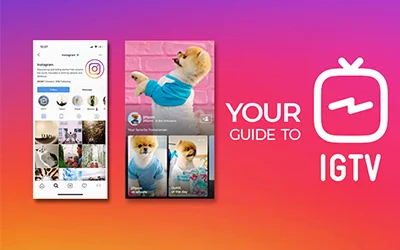Imagine that you are shopping for a new cell phone online, and just as you are about to pay, a case or maybe a pair of headphones that perfectly matches your purchase is listed on the internet. That’s cross-selling! It's like having a salesperson to help you find everything you need in one go, increasing the joy of shopping and making you feel desirable about your alternatives. Let's find out what cross selling means, why it is beneficial, and how to use it properly if you run a business.
What is Cross-Selling?
Cross-selling means companies recommend additional products or services that complement whatever you're buying. Now, it's not about pushing products but about suggestions that could really improve your purchase experience. For instance, if you’re buying a camera, wouldn’t it be handy to consider a tripod or a camera bag right then and there?
Cross-Selling vs. Upselling: The Difference?
It’s easy to confuse cross-selling and upselling, but they’re quite different:
- Cross-Selling: So, to put simply, what cross selling means is when you’re offered related items. Buying a laptop? How about a mouse or keyboard for this?
- Upselling: This is when you’re encouraged to buy a version of what you are already getting at an extra high price. Think about choosing a computer with more storage or a higher processor than the one you chose to start with.
The Benefits of Cross-Selling
After knowing what is cross-selling, let's know the benefits it offers. Cross-selling not only increases the transaction size but also significantly improves customer satisfaction by offering more complete solutions, like:
1. Enhanced Customer Experience
- Products that complement each other create more value for customers.
- It simplifies the decision-making process by reducing the search effort.
2. Increases sales and AOV (Average Order Value)
- With more sales in a single transaction, companies see an immediate effect on their bottom line.
- A higher AOV means higher cash performance without increasing consumer acquisition costs.
3. Builds Customer Loyalty and Retention
- Customers recognize the ease and personalized indicators that increase loyalty.
- Personalized experiences elevate the chance of repeat visits and referrals.
Strategies for Effective Cross-Selling
Implementing cross-selling strategies involves studying customer wants and behaviors and integrating that information into every revenue interplay. If you're a commercial business owner, here's how you can use cross-selling strategies without turning off your clients:
1. Know Your Customers
- Analyze purchasing behaviors and preferences to tailor cross-sell opportunities.
- Utilize customer data to create relevant product pairings.
2. Perfect Timing for Suggestions
- Create cross-sell offers when customers are most likely to be receptive, including during checkout.
- Avoid overwhelming clients with too many alternatives in one go.
3. Product Bundling
- Offer product bundles that provide a complete solution at a better price.
- Ensure bundles are logically connected to enhance their appeal.
4. Training Staff on Cross-Selling
- Train your team to understand when and how to suggest additional products.
- Ensure that suggestions are perceived as helpful advice rather than sales pressure.
Real-Life Examples of Cross-Selling
After knowing cross selling meaning, you can see cross-selling in action can help illustrate its effectiveness in various sectors, from retail to services.
- Electronics stores often suggest buying batteries or protective cases alongside gadgets.
- Clothing stores may recommend a belt or shoes to complete an outfit.
- E-commerce sites display items frequently bought together, like a camera with a tripod and carrying case.
- Subscription services may offer bundle deals, like streaming services suggesting premium plans with better features.
- Banks often offer savings accounts or credit card services when customers open a checking account.
- Insurance companies may suggest life or health insurance products alongside auto or home insurance.
Retail Stores:
Online Platforms:
Financial Services:
Integrating Digital Marketing with Cross-Selling
With today's technology, businesses can predict what you might need with impressive accuracy. Digital marketing strategies like retargeting ads and CRM systems help companies make smart, timely cross-selling suggestions that can feel surprisingly personal.
1. Retargeting and Remarketing
- Use online advertising to remind customers of previously viewed products and suggest complementary items.
- Tailor ads for lead generation based on user behavior to increase relevance and effectiveness.
2. CRM Systems for Data Insights
- Leverage customer relationship management systems to track buying habits and preferences.
- Use insights to make informed suggestions that are more likely to resonate.
Challenges in Cross-Selling
While cross-selling strategies have many benefits, they also have challenges that need careful handling to ensure customer satisfaction.
Maintaining Relevance:
- Always ensure that suggested products are relevant and genuinely useful.
- Avoid cross-selling items that do not add value to the customer’s purchase
Avoiding Overwhelm:
- Too many suggestions can lead to choice paralysis.
- Keep options limited and focused to enhance decision-making.
Conclusion
Cross-selling is a powerful approach for sales that, when done effectively, can greatly enhance user enjoyment and increase revenue. An effective understanding of cross selling meaning can help companies not only grow their sales but also build stronger relationships with their customers, ensuring long-term success and user loyalty. Incorporating cross-selling and upselling into your virtual advertising activities can increase sales, improve customer relationships, and create a stronger online presence. Whether you are just starting out or trying to improve your current techniques, the benefits of powerful cross-selling are significant and can lead to a big increase in your business.










